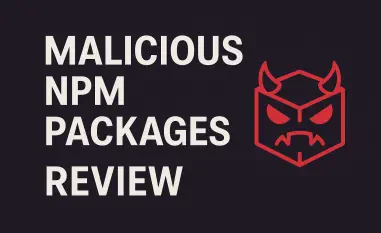Imagine a sprawling enterprise network, seamlessly blending on-premises servers with vast cloud platforms, enabling unparalleled scalability and efficiency, only to become a prime target for sophisticated cybercriminals who exploit every crack in its defenses. Hybrid cloud environments, which integrate traditional infrastructure with cloud solutions like Microsoft Azure, have transformed the way organizations operate, offering flexibility and cost savings. Yet, this very interconnectivity introduces complex security challenges that threaten to undermine these benefits, as ransomware groups and other threat actors adapt to exploit the unique vulnerabilities of such systems. This review delves into the evolving landscape of hybrid cloud security, examining the critical risks, emerging threats, and strategies essential for safeguarding these intricate setups.
Understanding Hybrid Cloud Environments
Hybrid cloud systems represent a fusion of on-premises infrastructure and public or private cloud platforms, creating a cohesive environment that caters to diverse business needs. These setups typically involve local servers for sensitive operations and cloud services for scalability, allowing enterprises to balance control with agility. Their adoption has surged among modern organizations seeking to optimize resources while maintaining critical data on-site, a trend driven by the demand for dynamic workload management.
The significance of hybrid clouds lies in their ability to offer tailored solutions, enabling companies to scale operations during peak demand without overhauling existing systems. This dual architecture supports cost-efficiency by reducing capital expenditure on hardware while leveraging cloud resources for innovation. However, the interconnected nature of these environments complicates security, as data and applications traverse multiple domains, each with distinct protocols and potential weak points.
Managing security across such diverse systems poses unique hurdles, as inconsistencies in policies between on-premises and cloud components can create exploitable gaps. The challenge intensifies with the need to synchronize identity management and access controls across platforms, often leading to oversights in configurations. These issues underscore the importance of a unified approach to protecting hybrid setups, setting the stage for a deeper exploration of specific vulnerabilities.
Key Vulnerabilities in Hybrid Cloud Security
Unmanaged Devices and Misconfigured Identities
One of the most pressing risks in hybrid cloud environments stems from unmanaged devices that operate outside centralized security controls. These devices, often overlooked in sprawling networks, provide threat actors with entry points to infiltrate systems undetected. When coupled with misconfigured identities, such as user accounts lacking proper permissions or oversight, attackers can escalate privileges and navigate through sensitive areas with alarming ease.
Real-world incidents reveal the devastating impact of such vulnerabilities, as ransomware groups have exploited these weaknesses to deploy malicious payloads across enterprises. For instance, attackers often target poorly secured endpoints to gain initial access, then leverage misconfigured credentials to move laterally, compromising entire domains. This chain of exploitation highlights the critical need for rigorous device management and identity verification protocols to prevent unauthorized access.
The repercussions of failing to address these issues extend beyond immediate breaches, often resulting in prolonged downtime and reputational damage. Security teams must prioritize visibility into all connected devices, ensuring that each adheres to strict access policies. Without such measures, hybrid environments remain susceptible to attacks that exploit the smallest oversight in configuration or monitoring.
Exploitation of Non-Human Identities and MFA Gaps
Another significant threat arises from non-human identities, such as service accounts or application credentials, which often lack robust multi-factor authentication (MFA) safeguards. These identities, integral to automated processes in cloud systems, become prime targets for attackers seeking to bypass traditional security measures. By exploiting these accounts, threat actors can reset passwords or register new authentication methods, effectively sidestepping existing defenses.
The technical mechanisms behind such attacks often involve impersonating legitimate processes to extract sensitive data or gain administrative control. In hybrid setups, attackers may target synchronization servers to harvest password hashes, using them to access cloud domains with elevated privileges. This method has proven effective in granting full control over resources, as non-human identities frequently hold extensive permissions by default.
Addressing this vulnerability requires enforcing MFA across all identity types, regardless of their role or origin. The absence of such protections creates a glaring loophole that sophisticated attackers exploit with precision, often leading to catastrophic breaches. Enterprises must audit these accounts regularly, ensuring that security configurations align with best practices to mitigate the risk of unauthorized access.
Emerging Threats and Attack Trends
The threat landscape for hybrid cloud security continues to evolve, with ransomware groups demonstrating increasing sophistication in targeting these environments. Attackers have shifted focus from traditional on-premises strategies to cloud-centric tactics, recognizing the potential for greater disruption in interconnected systems. This transition reflects a broader trend of adapting to technological advancements, where malicious actors exploit the trust between integrated platforms.
A notable development is the use of legitimate cloud tools for nefarious purposes, complicating detection efforts as malicious activities blend with routine operations. Groups often employ native commands for reconnaissance, credential theft, and data manipulation, leveraging the inherent capabilities of cloud platforms against their owners. This approach not only masks their presence but also amplifies the scale of potential damage.
Additionally, the complexity of multi-tenant environments adds another layer of risk, as attackers traverse between tenants to expand their reach. Such tactics underscore the growing challenge of maintaining consistent security across diverse systems, where a single breach can cascade into widespread compromise. As these threats become more refined, organizations must adapt by enhancing monitoring and response capabilities to counter evolving attack patterns.
Real-World Impacts of Hybrid Cloud Attacks
The consequences of security breaches in hybrid cloud systems are profound, particularly in industries like finance and healthcare where data sensitivity is paramount. Breaches often result in significant operational disruptions, as attackers steal critical information or deploy ransomware to paralyze systems. The financial toll of such incidents includes not only direct losses but also costs associated with recovery and legal repercussions.
Specific cases illustrate the severity of these impacts, with attackers using compromised accounts on platforms like Microsoft Teams for extortion purposes. In several documented attacks, threat actors have engaged in mass deletion of data to hinder recovery, while demanding ransom payments through hijacked communication channels. These actions disrupt business continuity and erode trust among stakeholders.
Beyond immediate effects, the long-term damage to reputation and customer confidence can be even more debilitating. Enterprises in regulated sectors face additional scrutiny from authorities, often incurring penalties for non-compliance with data protection standards. These real-world examples emphasize the urgent need for robust defenses to protect against the cascading effects of hybrid cloud attacks.
Challenges in Securing Hybrid Cloud Systems
Securing hybrid cloud environments presents a multitude of obstacles, starting with technical issues such as unprotected endpoints that serve as gateways for attackers. These endpoints, often scattered across on-premises and cloud domains, require consistent monitoring and patching, a task made difficult by the sheer diversity of systems involved. Without comprehensive oversight, even a single unsecured device can jeopardize an entire network.
Regulatory compliance further complicates security efforts, as organizations must navigate a patchwork of standards that vary by region and industry. Ensuring adherence to these rules while maintaining operational efficiency demands significant resources and expertise, often straining internal capabilities. Disparities in compliance requirements between on-premises and cloud components can also lead to gaps in protection.
Enforcing uniform security policies across hybrid setups remains a persistent challenge, as differing protocols and tools create inconsistencies. Cloud providers and enterprises are actively working to address these limitations through improved solutions, such as unified management platforms and enhanced training programs. Despite these efforts, the dynamic nature of hybrid systems necessitates continuous adaptation to emerging risks and regulatory changes.
Future Directions in Hybrid Cloud Security
Looking ahead, the trajectory of hybrid cloud security points toward significant advancements aimed at bolstering enterprise defenses. Enhanced enforcement of multi-factor authentication, particularly for non-human identities, stands as a priority to close existing gaps in access control. Such measures promise to reduce the likelihood of unauthorized access, even as attack methods grow more sophisticated.
Innovative monitoring tools are also on the horizon, designed to provide deeper visibility into hybrid environments and detect anomalies in real time. The integration of artificial intelligence for threat detection offers potential to preemptively identify risks, analyzing patterns across vast datasets to predict and mitigate attacks. These technologies could redefine how organizations respond to evolving threats over the coming years.
The long-term impact of these developments is likely to strengthen enterprise resilience, fostering a more secure digital landscape. As security frameworks evolve, collaboration between cloud providers and businesses will be crucial to standardize protections and share intelligence on emerging risks. This collective effort holds the key to sustaining trust in hybrid cloud systems amidst a constantly shifting threat environment.
Conclusion and Key Takeaways
Reflecting on the detailed exploration of hybrid cloud security, it becomes evident that the intricate balance of on-premises and cloud systems poses substantial risks, driven by vulnerabilities like unmanaged devices and inadequate authentication measures. Sophisticated threat actors have exploited these weaknesses, causing severe disruptions across industries through data theft and extortion tactics. The challenges in enforcing consistent policies and meeting regulatory demands have further compounded the struggle to protect these environments.
Moving forward, actionable steps emerge as critical to fortifying defenses against such threats. Enterprises need to prioritize comprehensive audits of all identities and endpoints, ensuring that robust multi-factor authentication is universally applied. Investing in advanced monitoring solutions and fostering partnerships with cloud providers offers a pathway to enhance threat detection and response capabilities. These measures, combined with a commitment to ongoing adaptation, provide a foundation for mitigating the persistent dangers in hybrid cloud setups, paving the way for safer technological integration.













